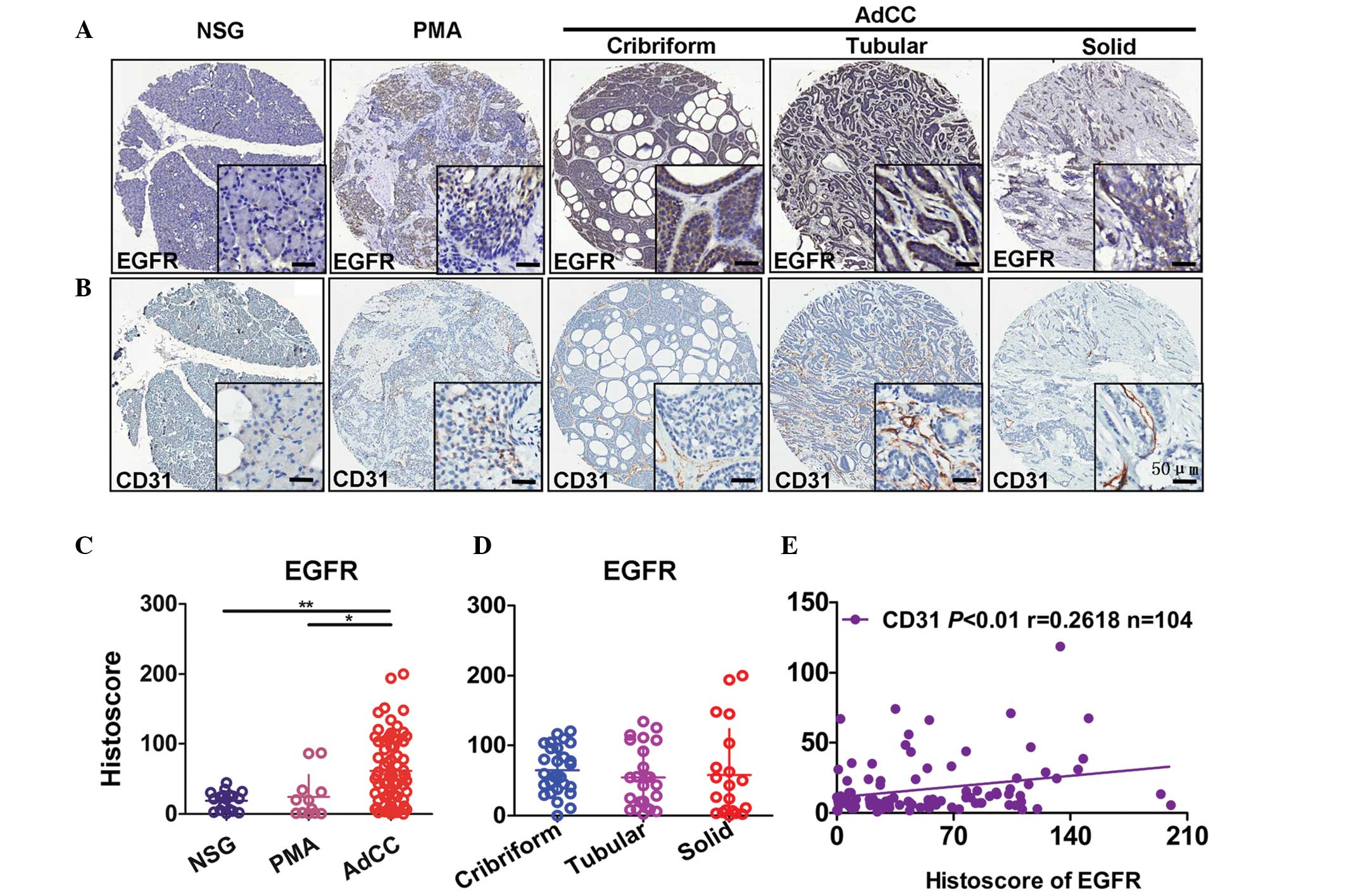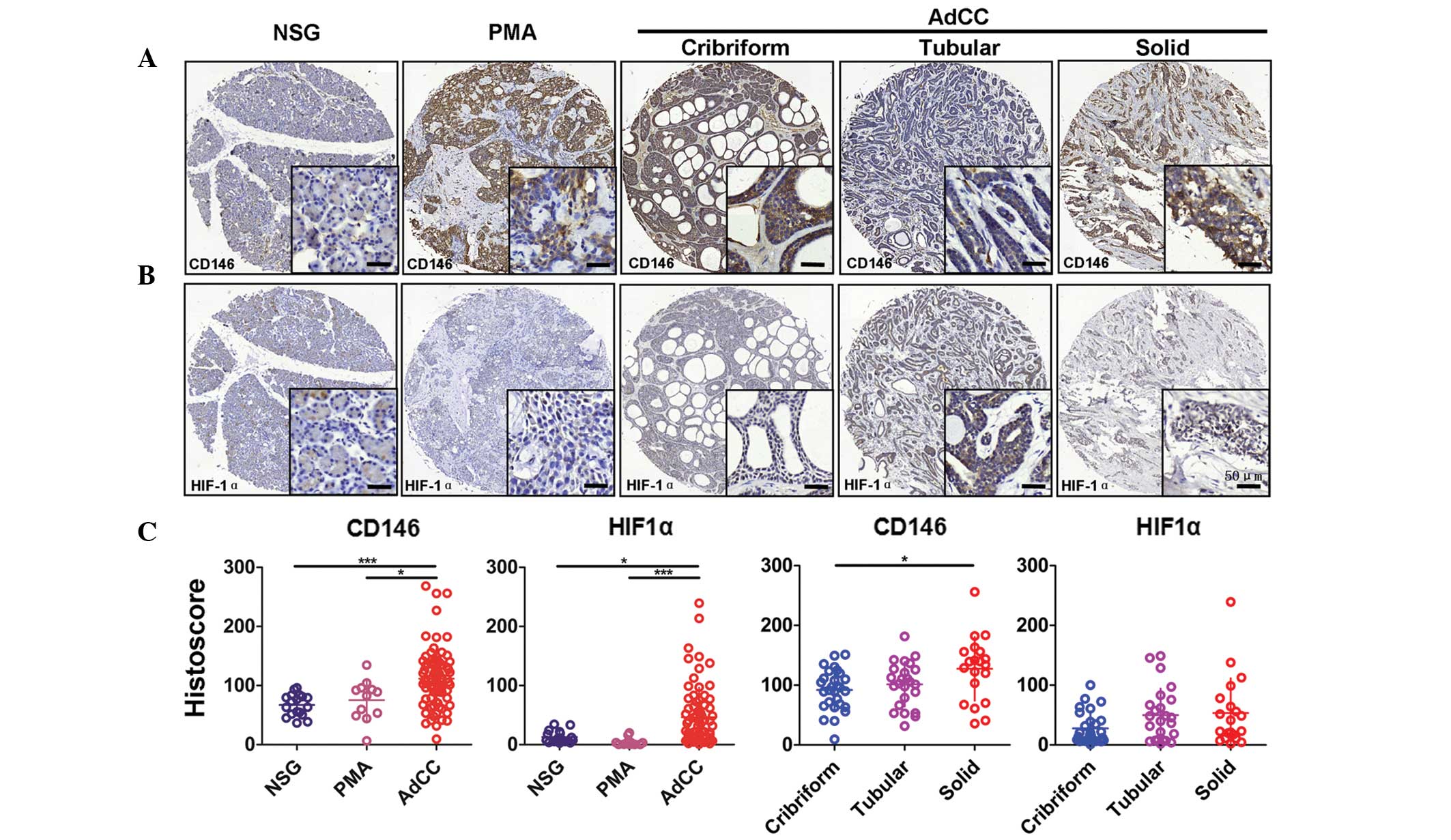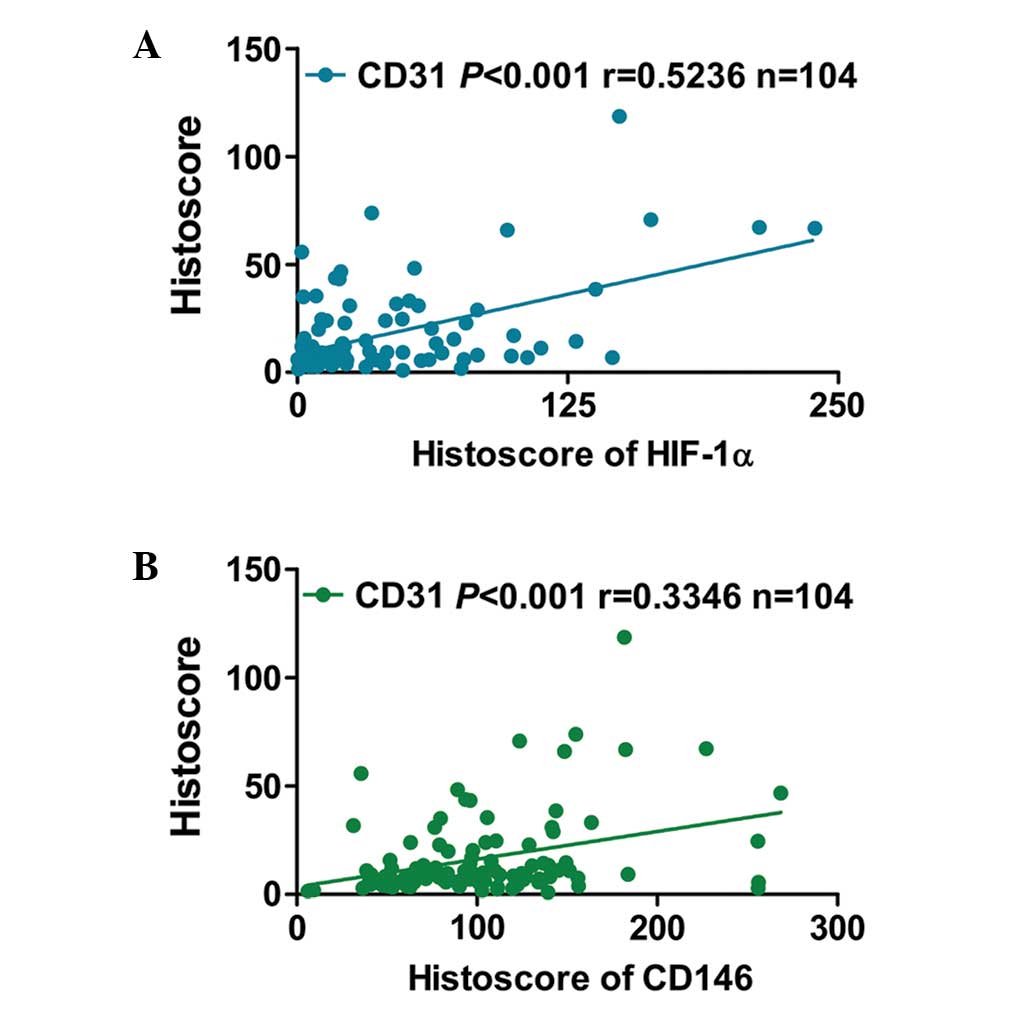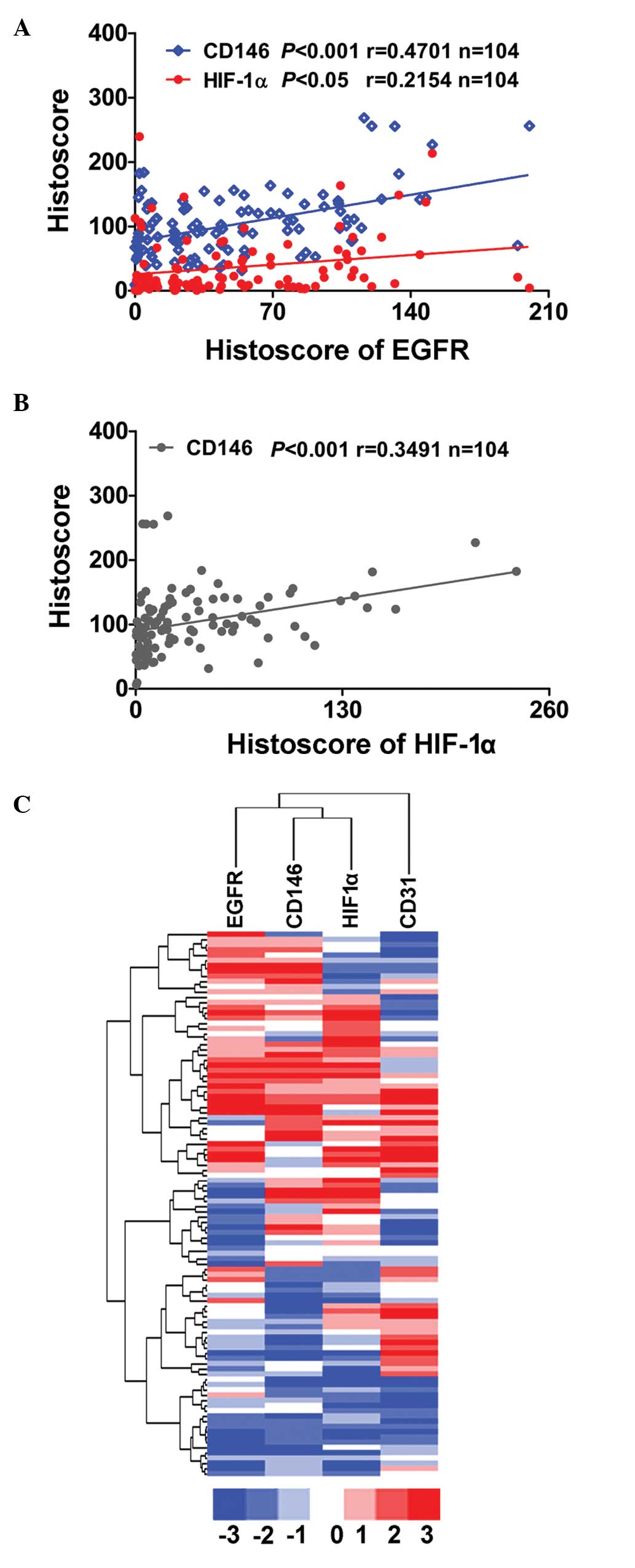|
1
|
Ellington CL, Goodman M, Kono SA, Grist W,
Wadsworth T, et al: Adenoid cystic carcinoma of the head and neck:
Incidence and survival trends based on 1973–2007 surveillance,
epidemiology and end results data. Cancer. 118:4444–4451. 2012.
View Article : Google Scholar : PubMed/NCBI
|
|
2
|
Bhayani MK, Yener M, El-Naggar A, Garden
A, Hanna EY, et al: Prognosis and risk factors for early-stage
adenoid cystic carcinoma of the major salivary glands. Cancer.
118:2872–2878. 2012. View Article : Google Scholar
|
|
3
|
Laurie SA, Ho AL, Fury MG, Sherman E and
Pfister DG: Systemic therapy in the management of metastatic or
locally recurrent adenoid cystic carcinoma of the salivary glands:
A systematic review. Lancet Oncol. 12:815–824. 2011. View Article : Google Scholar
|
|
4
|
Fantin VR and Abraham RT: Self-eating
limits EGFR-dependent tumor growth. Cell. 154:1184–1186. 2013.
View Article : Google Scholar : PubMed/NCBI
|
|
5
|
Kitano H, Chung JY, Ylaya K, Conway C,
Takikita M, et al: Profiling of phospho-AKT, phospho-mTOR,
phospho-MAPK and EGFR in non-small cell lung cancer. J Histochem
Cytochem. 62:335–346. 2014. View Article : Google Scholar : PubMed/NCBI
|
|
6
|
Wu M, Yuan Y, Pan YY and Zhang Y: Combined
gefitinib and pemetrexed overcome the acquired resistance to
epidermal growth factor receptor tyrosine kinase inhibitors in
non-small cell lung cancer. Mol Med Rep. 10:931–938.
2014.PubMed/NCBI
|
|
7
|
Wu M, Yuan Y, Pan YY and Zhang Y:
Antitumor activity of combination treatment with gefitinib and
docetaxel in EGFR-TKI-sensitive, primary resistant and acquired
resistant human non-small cell lung cancer cells. Mol Med Rep.
9:2417–2422. 2014.PubMed/NCBI
|
|
8
|
Fan QW, Cheng CK, Gustafson WC, Charron E,
Zipper P, et al: EGFR phosphorylates tumor-derived EGFRvIII driving
STAT3/5 and progression in glioblastoma. Cancer Cell. 24:438–449.
2013. View Article : Google Scholar : PubMed/NCBI
|
|
9
|
Carmeliet P and Jain RK: Angiogenesis in
cancer and other diseases. Nature. 407:249–257. 2000. View Article : Google Scholar : PubMed/NCBI
|
|
10
|
Hashizume H, Baluk P, Morikawa S, McLean
JW, Thurston G, et al: Openings between defective endothelial cells
explain tumor vessel leakiness. Am J Pathol. 156:1363–1380. 2000.
View Article : Google Scholar : PubMed/NCBI
|
|
11
|
Goel S, Duda DG, Xu L, Munn LL, Boucher Y,
et al: Normalization of the vasculature for treatment of cancer and
other diseases. Physiol Rev. 91:1071–1121. 2011. View Article : Google Scholar : PubMed/NCBI
|
|
12
|
Garcia S1, Dalès JP and Charafe-Jauffret
E: Poor prognosis in breast carcinomas correlates with increased
expression of targetable CD146 and c-Met and with proteomic
basal-like phenotype. Hum Pathol. 38:830–841. 2007. View Article : Google Scholar : PubMed/NCBI
|
|
13
|
Stopp S, Bornhauser M, Ugarte F, Wobus M,
Kuhn M, et al: Expression of the melanoma cell adhesion molecule in
human mesenchymal stromal cells regulates proliferation,
differentiation and maintenance of hematopoietic stem and
progenitor cells. Haematologica. 98:505–513. 2013. View Article : Google Scholar :
|
|
14
|
Chen W, Zhang HL, Jiang YG, Li JH, Liu BL,
et al: Inhibition of CD146 gene expression via RNA interference
reduces in vitro perineural invasion on ACC-M cell. J Oral Pathol
Med. 38:198–205. 2009. View Article : Google Scholar : PubMed/NCBI
|
|
15
|
Xie S, Luca M, Huang S, Gutman M, Reich R,
et al: Expression of MCAM/MUC18 by human melanoma cells leads to
increased tumor growth and metastasis. Cancer Res. 57:2295–2303.
1997.PubMed/NCBI
|
|
16
|
Malyszko J, Malyszko JS, Brzosko S,
Wolczynski S and Mysliwiec M: Adiponectin is related to CD146, a
novel marker of endothelial cell activation/injury in chronic renal
failure and peritoneally dialyzed patients. J Clin Endocrinol
Metab. 89:4620–4627. 2004. View Article : Google Scholar : PubMed/NCBI
|
|
17
|
Jiang T, Zhuang J, Duan H, Luo Y, Zeng Q,
et al: CD146 is a coreceptor for VEGFR-2 in tumor angiogenesis.
Blood. 120:2330–2339. 2012. View Article : Google Scholar : PubMed/NCBI
|
|
18
|
Li J, Xu Y, Long XD, Wang W, Jiao HK, et
al: Cbx4 governs HIF-1α to potentiate angiogenesis of
hepatocellular carcinoma by its SUMO E3 ligase activity. Cancer
Cell. 25:118–131. 2014. View Article : Google Scholar : PubMed/NCBI
|
|
19
|
Hughes JM, Groot AJ, van der Groep P,
Sersansie R, Vooijs M, et al: Active HIF-1 in the normal human
retina. J Histochem Cytochem. 58:247–254. 2010. View Article : Google Scholar :
|
|
20
|
Thompson L: World Health Organization
classification of tumours: pathology and genetics of head and neck
tumours. Ear Nose Throat J. 85:742006.PubMed/NCBI
|
|
21
|
Sun ZJ, Chen G, Hu X, Zhang W, Liu Y, et
al: Activation of PI3K/Akt/IKK-alpha/NF-kappaB signaling pathway is
required for the apoptosis-evasion in human salivary adenoid cystic
carcinoma: Its inhibition by quercetin. Apoptosis. 15:850–863.
2010. View Article : Google Scholar : PubMed/NCBI
|
|
22
|
Sun ZJ, Chen G, Zhang W, Hu X, Huang CF,
et al: Mammalian target of rapamycin pathway promotes tumor-induced
angiogenesis in adenoid cystic carcinoma: Its suppression by
isoliquiritigenin through dual activation of c-Jun NH2-terminal
kinase and inhibition of extracellular signal-regulated kinase. J
Pharmacol Exp Ther. 334:500–512. 2010. View Article : Google Scholar : PubMed/NCBI
|
|
23
|
Sun ZJ, Zhang L, Hall B, Bian Y, Gutkind
JS, et al: Chemopreventive and chemotherapeutic actions of mTOR
inhibitor in genetically defined head and neck squamous cell
carcinoma mouse model. Clin Cancer Res. 18:5304–5313. 2012.
View Article : Google Scholar : PubMed/NCBI
|
|
24
|
Welti J, Loges S, Dimmeler S and Carmeliet
P: Recent molecular discoveries in angiogenesis and antiangiogenic
therapies in cancer. J Clin Invest. 123:3190–3200. 2013. View Article : Google Scholar : PubMed/NCBI
|
|
25
|
Kratzer A, Chu HW, Salys J, Moumen Z,
Leberl M, et al: Endothelial cell adhesion molecule CD146:
Implications for its role in the pathogenesis of COPD. J Pathol.
230:388–398. 2013. View Article : Google Scholar : PubMed/NCBI
|
|
26
|
Kebir A, Harhouri K, Guillet B, Liu JW,
Foucault-Bertaud A, et al: CD146 short isoform increases the
proangiogenic potential of endothelial progenitor cells in vitro
and in vivo. Circ Res. 107:66–75. 2010. View Article : Google Scholar : PubMed/NCBI
|
|
27
|
Ye Z, Zhang C, Tu T, Sun M, Liu D, et al:
Wnt5a uses CD146 as a receptor to regulate cell motility and
convergent extension. Nat Commun. 4:28032013. View Article : Google Scholar : PubMed/NCBI
|
|
28
|
Wang P, Luo Y, Duan H, Xing S, Zhang J, et
al: MicroRNA 329 suppresses angiogenesis by targeting CD146. Mol
Cell Biol. 33:3689–3699. 2013. View Article : Google Scholar : PubMed/NCBI
|
|
29
|
Bu P, Gao L, Zhuang J, Feng J, Yang D, et
al: Anti-CD146 monoclonal antibody AA98 inhibits angiogenesis via
suppression of nuclear factor-kappaB activation. Mol Cancer Ther.
5:2872–2878. 2006. View Article : Google Scholar : PubMed/NCBI
|
|
30
|
Suzuki M, Shinohara F and Rikiishi H:
Zebularine-induced reduction in VEGF secretion by HIF-1α
degradation in oral squamous cell carcinoma. Mol Med Rep.
1:465–471. 2008.PubMed/NCBI
|
|
31
|
Zhu C, Liu X, Wang S, Yan X, Tang Z, et
al: Hepatitis C virus core protein induces hypoxia-inducible factor
1α-mediated vascular endothelial growth factor expression in Huh751
cells. Mol Med Rep. 9:2010–2014. 2014.PubMed/NCBI
|
|
32
|
Secades P, de Santa-María IS, Merlo A,
Suarez C and Chiara MD: In vitro study of normoxic epidermal growth
factor receptor-induced hypoxia-inducible factor-1-alpha, vascular
endothelial growth factor, and BNIP3 expression in head and neck
squamous cell carcinoma cell lines: Implications for anti-epidermal
growth factor receptor therapy. Head Neck. May 2–2014.Epub ahead of
print.
|
|
33
|
Lu H, Liang K, Lu Y and Fan Z: The
anti-EGFR antibody cetuximab sensitizes human head and neck
squamous cell carcinoma cells to radiation in part through
inhibiting radiation-induced upregulation of HIF-1α. Cancer Lett.
322:78–85. 2012. View Article : Google Scholar : PubMed/NCBI
|
|
34
|
Whelan KA, Schwab LP, Karakashev SV,
Franchetti L, Johannes GJ, et al: The oncogene HER2/neu (ERBB2)
requires the hypoxia-inducible factor HIF-1 for mammary tumor
growth and anoikis resistance. J Biol Chem. 288:15865–15877. 2013.
View Article : Google Scholar : PubMed/NCBI
|
|
35
|
Yarden Y and Pines G: The ERBB network: At
last, cancer therapy meets systems biology. Nat Rev Cancer.
12:553–563. 2012. View
Article : Google Scholar : PubMed/NCBI
|
|
36
|
Sequeiros-Santiago G, García-Carracedo D,
Fresno MF, Suarez C, Rodrigo JP, et al: Oncogene amplification
pattern in adenoid cystic carcinoma of the salivary glands. Oncol
Rep. 21:1215–1222. 2009.PubMed/NCBI
|
|
37
|
Vered M, Braunstein E and Buchner A:
Immunohistochemical study of epidermal growth factor receptor in
adenoid cystic carcinoma of salivary gland origin. Head Neck.
24:632–636. 2002. View Article : Google Scholar : PubMed/NCBI
|
|
38
|
Jia J, Zhang W, Liu JY, Chen G, Liu H, et
al: Epithelial mesenchymal transition is required for acquisition
of anoikis resistance and metastatic potential in adenoid cystic
carcinoma. PLoS One. 7:e515492012. View Article : Google Scholar : PubMed/NCBI
|













